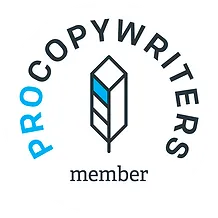As a copywriter and a bit of a tone of voice specialist, I’m interested in the power of words to convey personality. The foundation of any good tone of voice is understanding how you structure your sentences, what’s included in your vocabulary, and the frames of reference you go to.
But I’m not so arrogant that I’ll tell you copy can solve all your personality problems.
When your behaviour reveals who you really are
Real-world example: a client who’s big enough to know better insisted on including the fairly bland ‘personal’ as a personality trait. I fought the good fight, but it ended up finding its way through.
The word might be bland, but the intention is good: we’re a brand, but we’re also a group of human beings who are invested in what our customers need. ‘Personal’ is in our personality because we take what we do personally. The argument, of course, is that this applies to literally every business in the world – but that’s another article.
Cue the complex process of writing a website and core collateral in a new tone of voice, adopting this very human, personal style which I would’ve written in anyway. A handful of revisions, a long wait for the designer, and the website’s live.
And what do I see?
- Not a single human being in the photography
- Impersonal email addresses like customer.enquiries(at)bigbrand.com
- The world’s biggest contact form that asks a billion qualifying questions rather than just letting prospects speak to a person
The result: a brand that speaks like a trusted friend, but acts like a robot. It’s personal by self-proclamation – personal in voice – but not actually personal in practice.
The experience speaks louder than the words
This is far from the only example. Some of my favourite all-timers include:
- The SaaS brand that shouts about transparency but doesn’t publish pricing
- The IT firm that values simplicity but has complex, confusing user journeys
- The big agency that for some reason ignores any sense of style or good practice on its own website
When customers land on your website – or see any other collateral – they don’t want to be told about your personality. They don’t want you to claim to be one thing or another. They want to feel it.
Just like in the rest of our lives, we trust people who seem to be walking the walk. All the talk is just there to anchor big messages and support the experience.
- If you’re all about making life easier for your customers, why would that only start once they enter the funnel? Start with some smart UX and a refreshingly straightforward journey from first click to enquiry.
- If you’re all about the expertise of your people, why aren’t you sharing that on your website or in brochures? Testimonial-style blocks from your team could highlight their expertise and perspective on the things you sell, or industry hot topics.
- If you’re positioning as more grounded and down to earth? How about a block at the top of your website that says ‘If you can’t be bothered to read all the detail, here are the highlights:’ with a handful of bullets.
We aren’t just what we say: we’re what we do. And treating tone of voice as something separate from the tangible ways you interact with your customers will only highlight the mismatch.
Copy, design, UX, customer service – it all needs to support the same few big ideas. It only works when it all works together.
